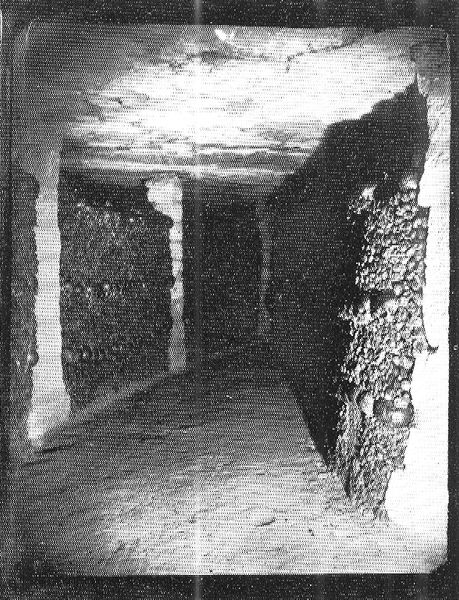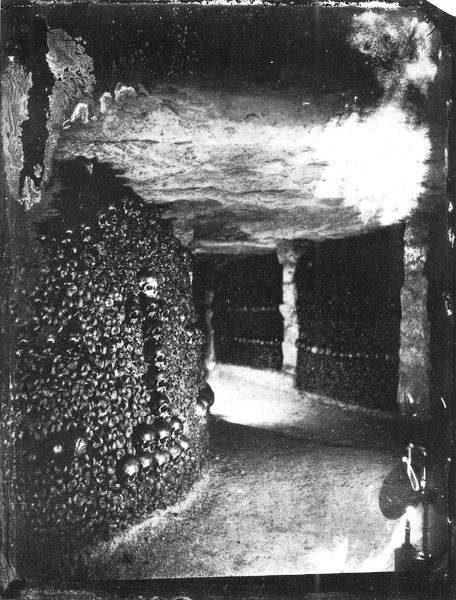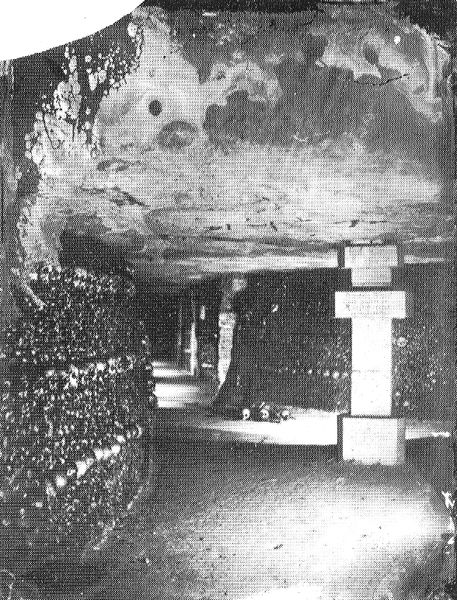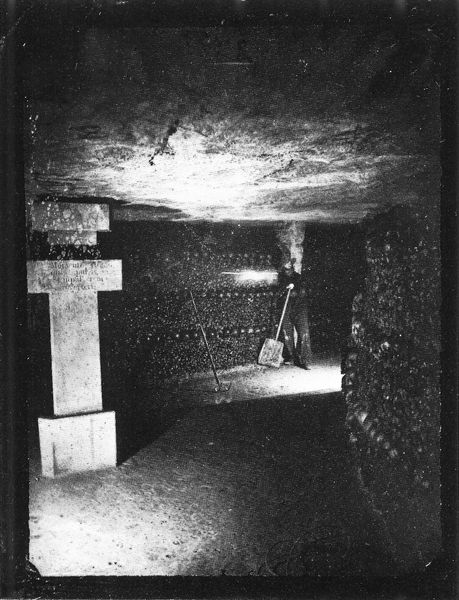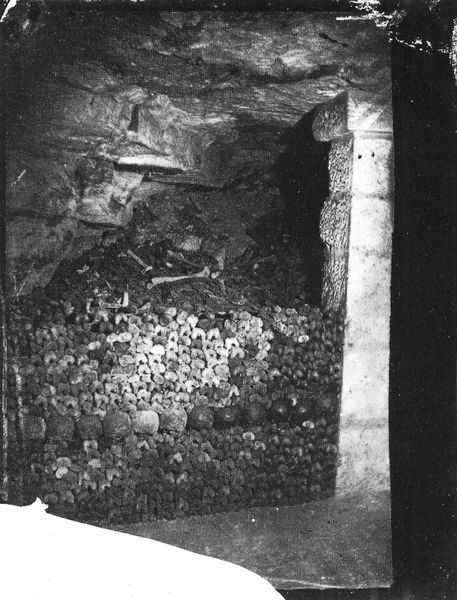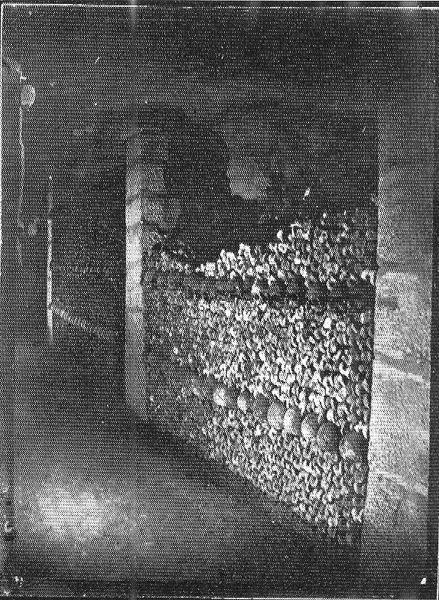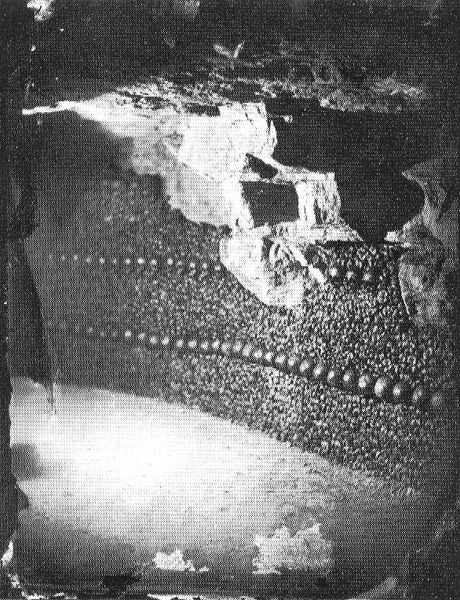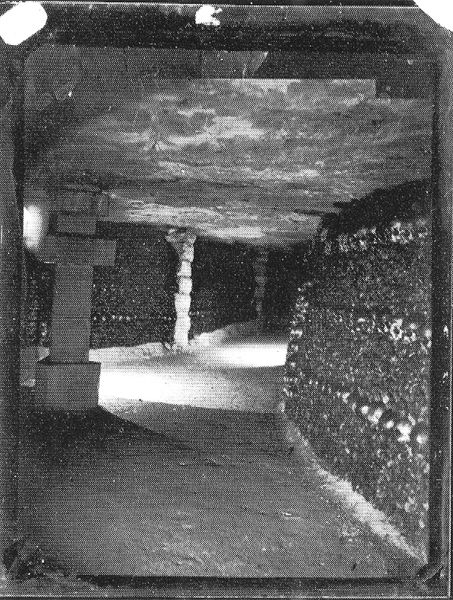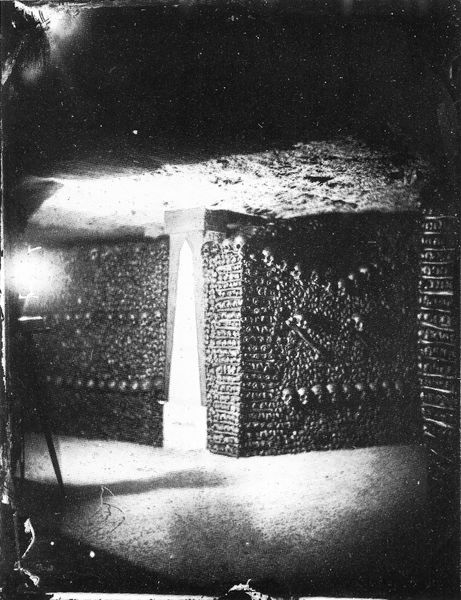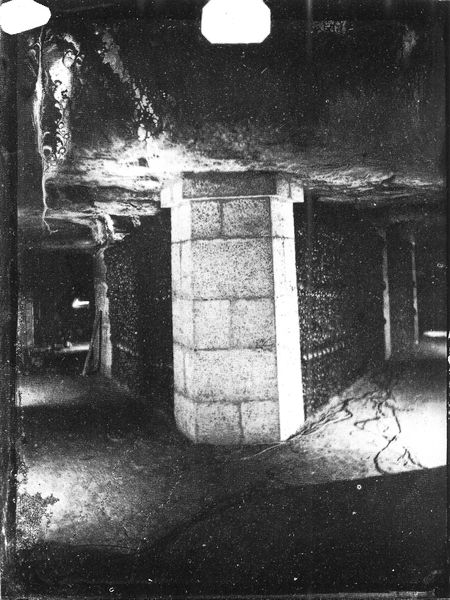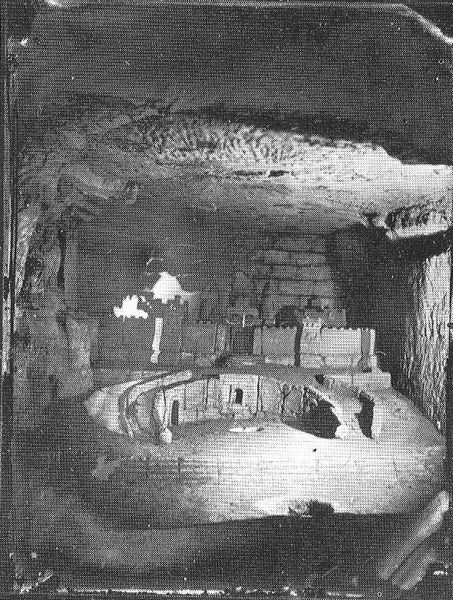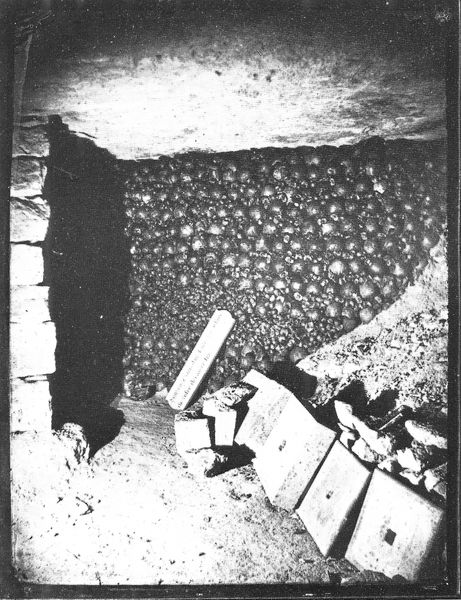
Copyright: Public domain
Curator: A bit morbid, don't you think? Piles and piles of skulls. And what’s that, someone standing in the background? The texture alone is overwhelming. Editor:Indeed. This is Félix Nadar's "Catacombes De Paris," created in 1861 using a gelatin-silver print. Note how the choice of medium, then revolutionary for subterranean photography, directly influences our understanding of space and form here. Curator: Photography allowed Nadar to probe sites that remained largely unrepresented due to their inaccessibility. The image really captures a very specific historical moment: the visual cataloging of the Parisian catacombs for both scientific documentation and public consumption. Editor: But doesn’t that make you wonder about the arrangement of these ossuaries? Nadar seems less concerned with anatomical study, and more so the composition, the stark contrast of dark and light, forming rhythmic visual patterns with those craniums. The play of light itself shapes the feeling, suggesting layers of human history compressed into organized patterns. Curator: Yes, Nadar took pains to arrange a spectacle. One shouldn’t forget the Catacombs were refashioned during a time when the city needed both reburial sites due to cemetery overcrowding, and tourist attractions to help the economy. The lone figure in the background might suggest some kind of exploration. Editor: I am drawn to the photograph's structural elements; the contrast. It produces an unsettling sense of both depth and flatness. It evokes an emotional unease stemming from these visual binaries. Nadar’s lens is, to be sure, as much interpretive as it is descriptive. Curator: Right. Photography in Nadar’s time was as much a political instrument as a method of record keeping, transforming macabre subjects into romantic views, digestible for bourgeois taste. It represents more than subterranean topography, really a public spectacle and reflection on the macabre side of 19th-century urban life. Editor: So, Nadar's catacombs: simultaneously an objective record, and a subjective expression shaped through artistic form. Curator: Perhaps an uneasy dance between science, urban policy, and a bit of spectacle for the eager eyes of the public.
Comments
No comments
Be the first to comment and join the conversation on the ultimate creative platform.
